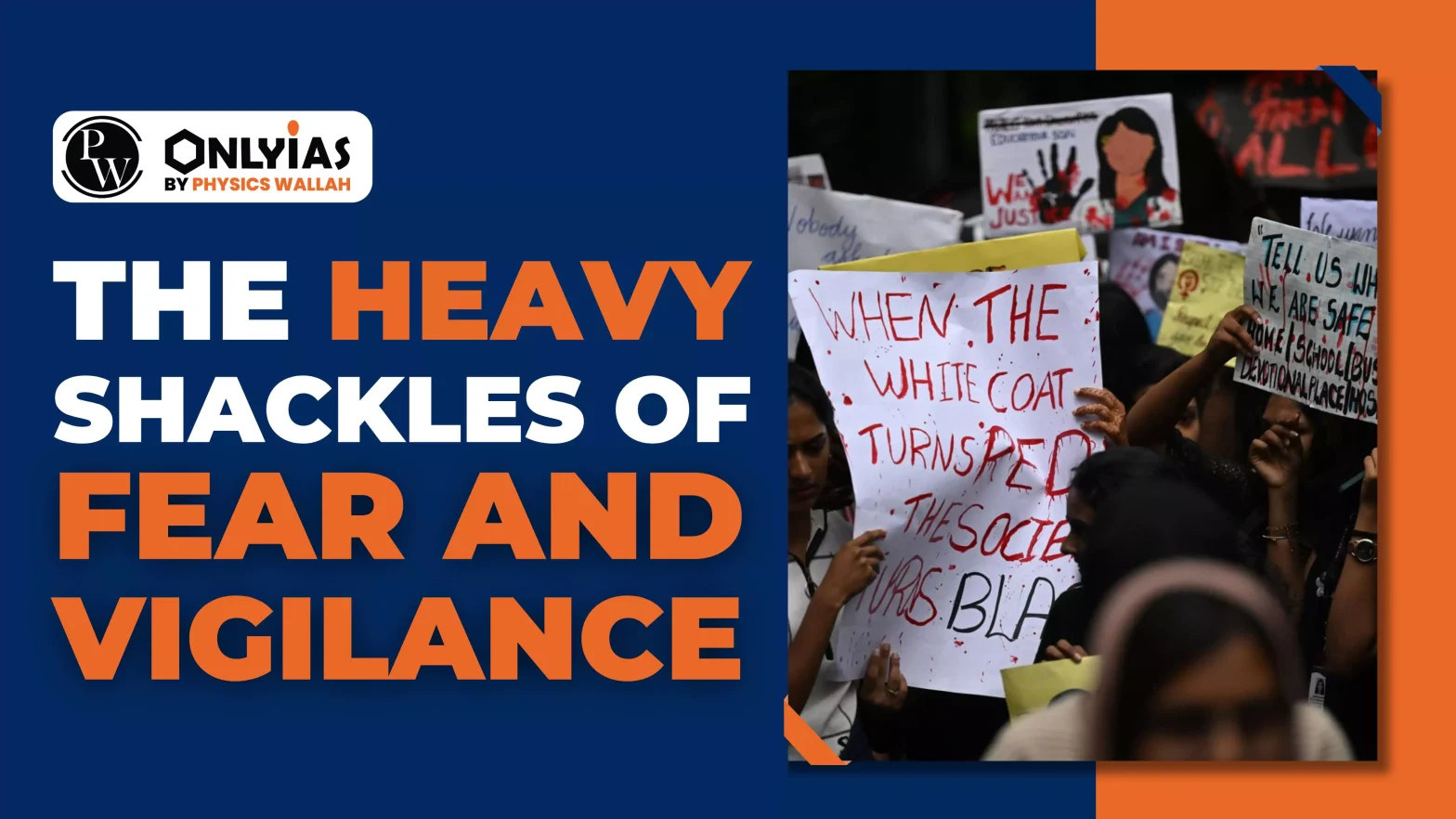The brutal rape and murder of a woman doctor in Kolkata has led to the country finding itself, once again, engaged in a deep conversation on the safety of women in India.
Women and Safety
- Women’s safety does not only relate to physician safety but also includes psychological safety. Psychological safety refers to mental peace and freedom.
- For example, Riya, a 25-year-old independent working woman who comes back home every day at 9 PM from the office, fears that something wrong will happen to her on her way back. This fear takes a toll on her and snatches away her mental peace.
- Women across the country face a spectrum of aggressive behaviour and violence – from sexual harassment and dowry-related deaths to rape and domestic violence.
- While the physical impact of violence against women is acknowledged by both the state and society as visible and tell-tale signs on women, there is considerably less focus on its psychological and behavioural consequences.
- This oversight means that while the physical and explicit acts of violence may provoke immediate and visible responses and draw public attention, the enduring psychological impact remains difficult to measure and often goes unnoticed and unaddressed.
Enroll now for UPSC Online Classes
Disadvantages faced by Women’s as a result of ingrained state of alertness
- In the absence of adequate structural protection by the state and society, the onus (burden) of one’s safety often falls on women themselves.
- As a result, women in India are forced to live in a state of perpetual vigilance and mental stress, constantly evaluating their surroundings for potential threats in public and private spaces can lead to long-term health issues.
- Impact on mental health: This state of constant alertness, deeply ingrained in the psyche of women, learned and imbibed from a young age, then becomes both necessary and exhausting.
- Limitation on one’s growth: Career limitation is one such major challenge faced by women. Late-night shifts and jobs in new cities pose serious challenges to growth and opportunities worldwide.
- Impact on social life: A woman generally avoids late-night outings or parties with friends, hesitation in meeting new people, not trust anyone easily making the friend circle of a lady much smaller as compared to a man. This is because of fear.
- Freedom of movement: At times women fear travelling alone because of the anti-social elements existing in the society.
- After every such horrific instance of violence against women, protests are held, tremendous pressure is exerted on the incumbent government and multiple articles get published but the major issue of psychological safety never gets addressed.
Terms associated with Discrimination against Women
- Intersectionality: The social categories of caste, class, and religion when gets overlap add complexity to the burden of vigilance women must bear, with marginalized women facing intensified discrimination and prejudice.
- For them, threats are not only gendered but also rooted in societal hierarchies. This is known as the intersectionality of caste, class, and religion. For example., a Dalit woman experiences double discrimination, first, she is a lady and second, she is a Dalit.
- While women from privileged caste and class backgrounds may have access to relatively safer environments, such as gated communities and private transportation, they are still not immune to harassment and violence.
- However, women from disadvantaged groups face more immediate and pervasive dangers, often lacking institutional support to address safety concerns.
- Inter-generational impact: A mother to ensure her daughter’s safety restraints her in various aspects. Later on, when the daughter gives birth to her child, she passes on her childhood insecurities and trauma to her daughter and the cycle continues. This is to be understood as inter-generational impact.
- Invisible burden: The mental stress as a result of safety concerns does not get addressed as rampantly as does physical violence. This leads to the creation of a burden on a lady that is invisible to all.
Impact of a Woman’s Incessant Fear on Society
- When women are forced to prioritize safety over curiosity, and vigilance over exploration, they are denied the full spectrum of the human experience.
- The world, instead of being a place of wonder and discovery, becomes one of danger and caution.
- This not only limits their experiences but also deprives society of the contributions and innovations that could flourish if women were free from this constant burden even after having the potential to do so.
Check Out UPSC NCERT Textbooks From PW Store
Conclusion
The vigilance also creates a dissonance between how women live and how they wish to live. Women are frequently forced to navigate this duality: advocating for empowerment while simultaneously adapting their behaviour to mitigate risks associated with their safety.
To get PDF version, Please click on "Print PDF" button.

